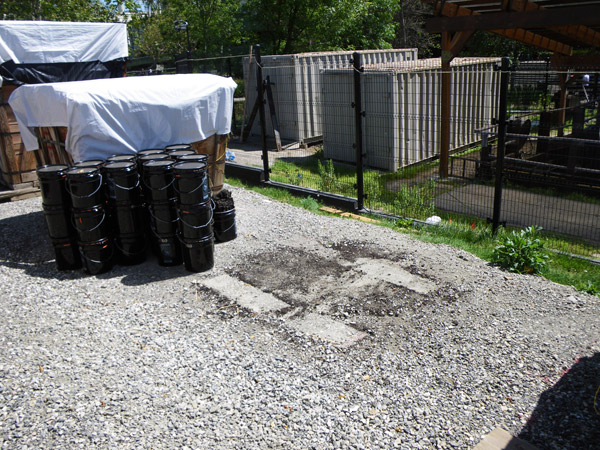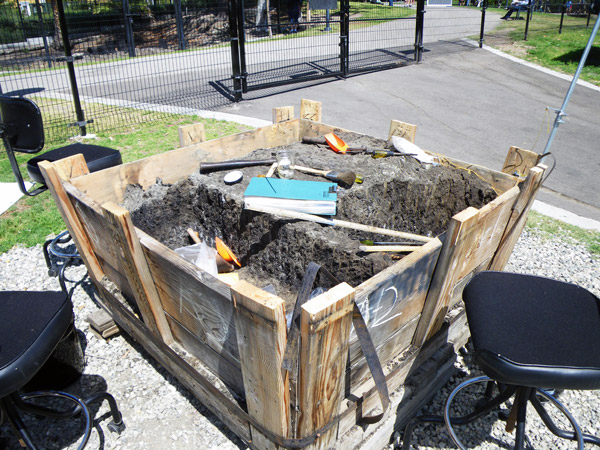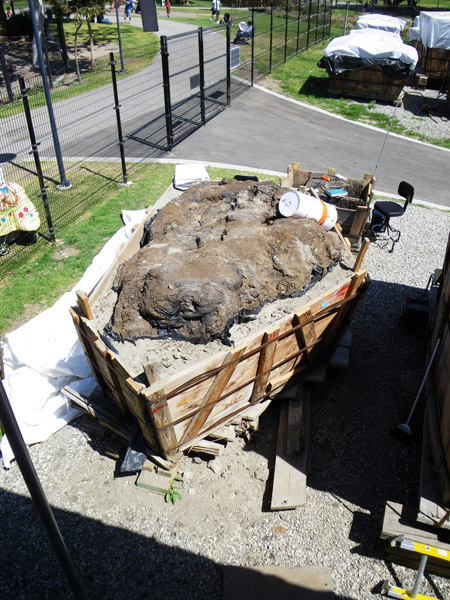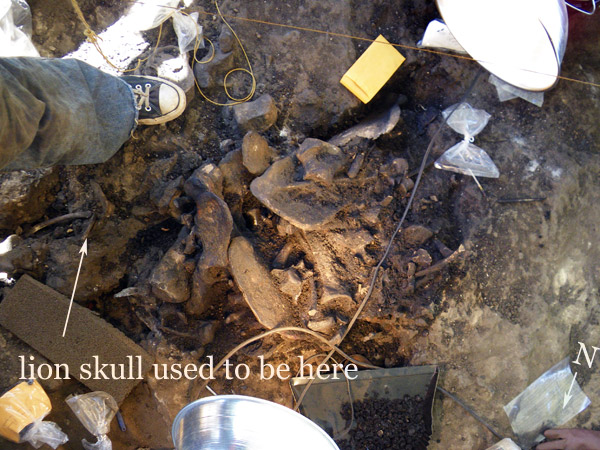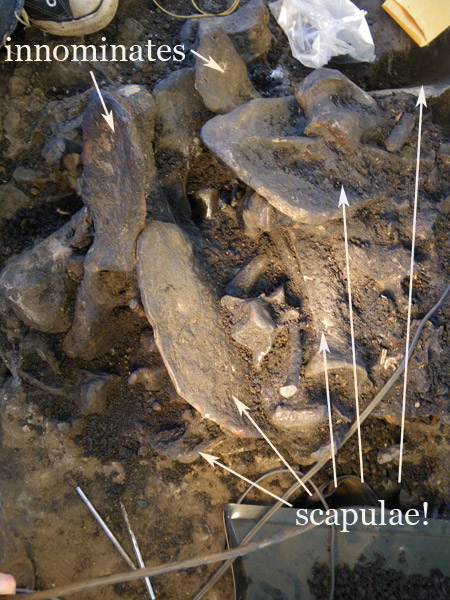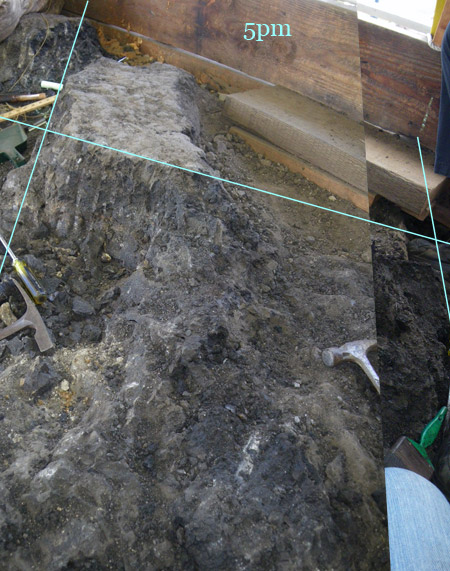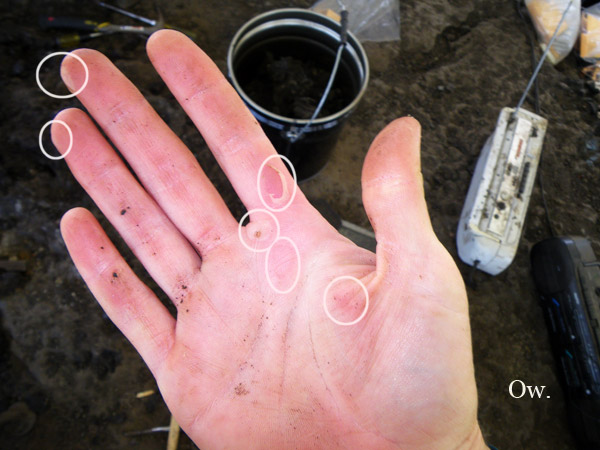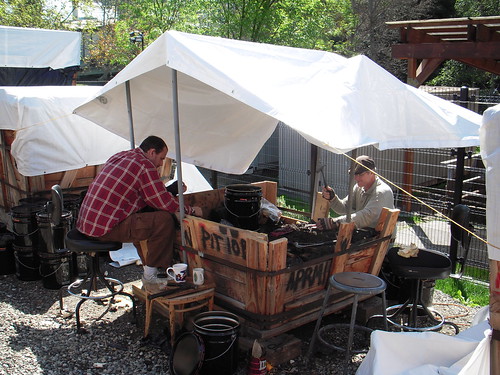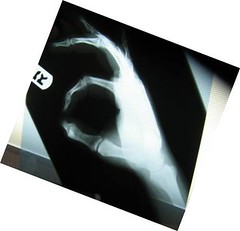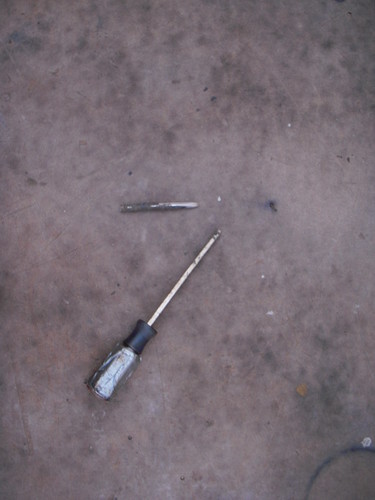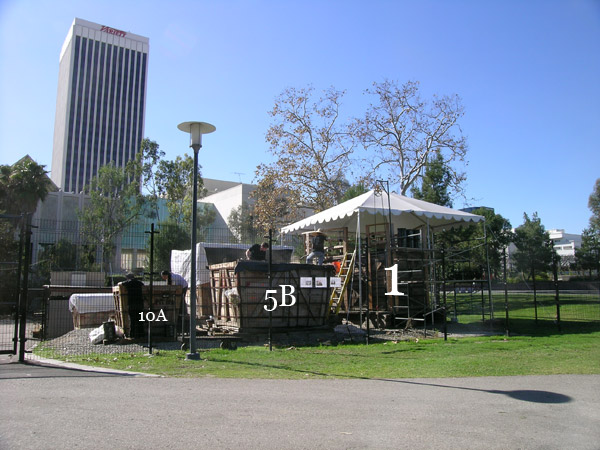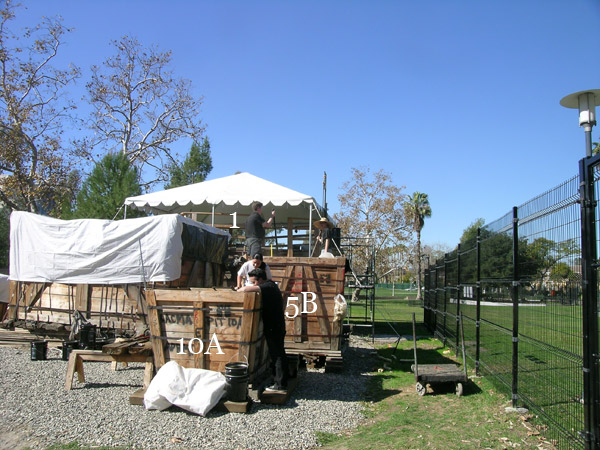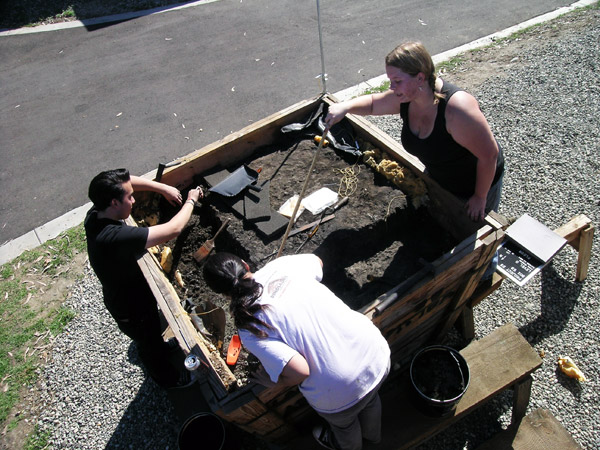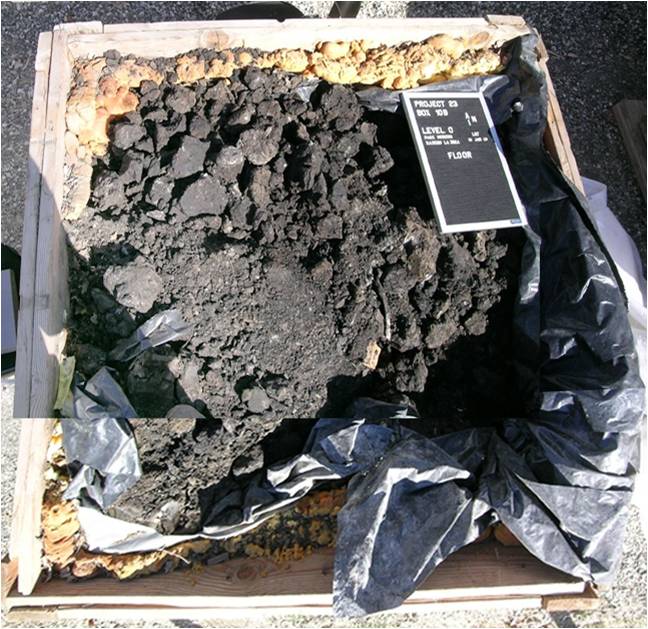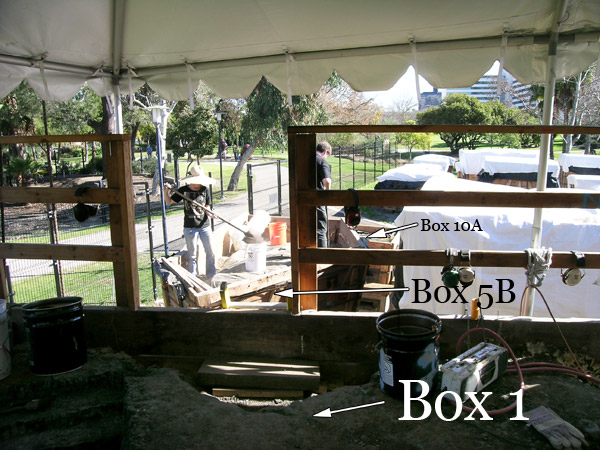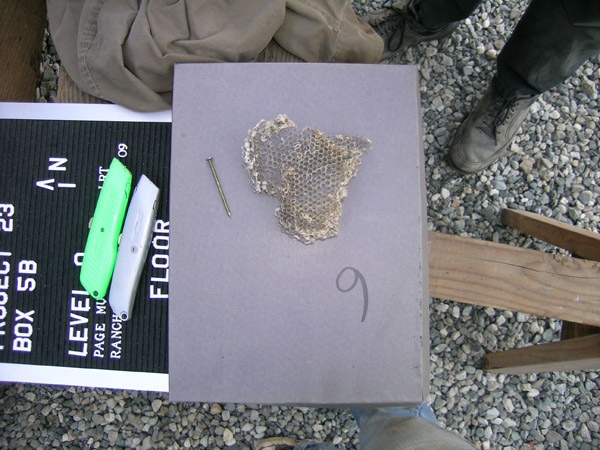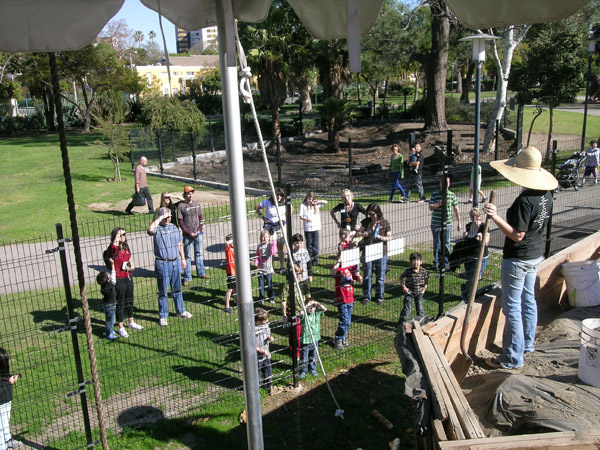Yes indeedy, as Ryan pointed out last week, we have finished excavating our very first deposit from Project 23:
10B is no more! And its big sister 10A is soon to follow:
We're down to Project 21-and-a-half. The small patch of fossils from this deposit seems to have petered out. We can't be sure, but we're thinking the remaining few feet of dirt are largely -- if not entirely sterile. The boundaries between grids are left in place until they're completely exposed, and then mapped and photographed. This way, we can reconstruct the deposit's geology long after the deposit has been excavated.
And 5B looks much the same is it did last time I posted, only sans a level of plywood around the sides.
We're waiting to speak to one of the geologists who originally supervised the salvage before we begin digging.
Meanwhile, in Deposit 1....
We're still plugging away at the main bone jumble in Box 1. We've measured out at least another 100 fossils from this area. Right now, however, we're at a bit of a standstill, stuck between a rock and a hard place so to speak. Or rather, a scapula (shoulder blade) and an innominate (one half of a pelvis):
Pleistocene pick-up sticks once again! From left to right: we can't get the first innominate out without removing the scapula immediately above it, but we can't get that scapula out because of the saber cat vertebra immediately above it. THAT's stuck under the middle scapula, which is in turn pinned in place by next-to-last scapula, which is, of course, covered by both a cat humerus (lion or saber cat, not sure though) and yet another scapula.
This is all very detailed, very slow work. However, on the other side of Box 1, we get the other end of the paleo-work perspective:
This is Grid D-3/Level 2 at 9am. Mouse over to see it at 5. Or, just scroll down:
D-3 is largely sterile, except for the occasional articulated millipede or bit of plant matter. This means we can power through it as quickly as our muscles allow. Spencer and I worked on D-3 all day, and chiseled out about 5 full buckets of matrix! Hard, hard work, as evidenced below:
6 blisters on my right hand! Badges of honor, all.
